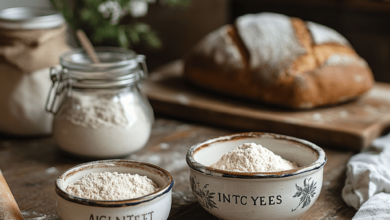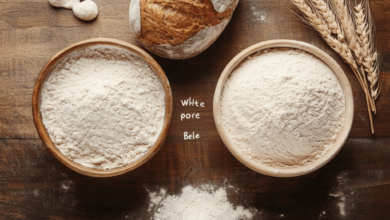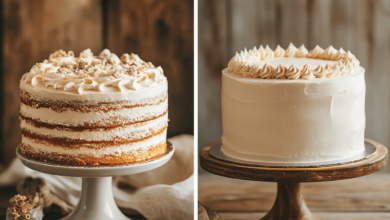Which One Is Better for Baking: Butter or Oil?
Introduction
“Which one is better for baking: butter or oil?” The choice between butter and oil can make a significant difference in your baked goods’ taste, texture, and moisture level. Understanding when to use each one and how they affect your final product can help you make the right choice for any recipe.
1. The Role of Butter in Baking
Butter is known for adding rich flavor and contributing to the texture of baked goods. It helps create a tender crumb and a golden-brown crust, thanks to its water content that evaporates during baking.
- Pros: Adds a buttery flavor, contributes to flakiness, and gives a desirable texture to cookies, cakes, and pastries.
- Cons: Can make baked goods drier compared to oil if not measured properly.
Best Uses: Butter is ideal for cookies, pastries, and cakes where flavor and a soft texture are key.
2. The Role of Oil in Baking
Oil, being 100% fat, provides more moisture than butter, which can be crucial for recipes where a tender, moist texture is desired. It’s often used in recipes that don’t rely on butter’s flavor, such as muffins and certain cakes.
- Pros: Adds moisture and creates a light, fluffy texture. Helps extend the shelf life of baked goods.
- Cons: Doesn’t provide the same flavor depth as butter.
Best Uses: Oil is perfect for quick breads, moist cakes like carrot or banana cake, and muffins.
3. Comparing the Effects on Texture and Moisture
- Butter: The water in butter creates steam during baking, which can add lightness and aid in leavening. This process contributes to a denser texture.
- Oil: Since oil is purely fat, it coats the flour proteins more effectively, reducing gluten formation and yielding a softer, more tender crumb.
Tip: For recipes where a moist, rich texture is preferred, oil often works best. For recipes that depend on flavor and texture, butter is the top choice.
4. Substituting Butter and Oil
If you need to substitute one for the other, here are some tips:
- Substituting Oil for Butter: Use 3/4 cup of oil for every 1 cup of butter to maintain the right fat content.
- Substituting Butter for Oil: Use slightly more butter to account for the water content (e.g., 1 cup of butter for 3/4 cup of oil).
5. When to Mix Butter and Oil
For certain recipes, using both butter and oil can give the best of both worlds—flavor from the butter and moisture from the oil. This technique works well for cakes that need to stay soft but have a rich taste, such as pound cake.
Conclusion
Choosing between butter and oil depends on the outcome you want in your baked goods. Butter adds flavor and texture, while oil ensures moisture and a tender crumb. Understanding their roles can help you decide which to use for your specific recipe needs.
For more baking tips and guides, visit kuestion.co.




